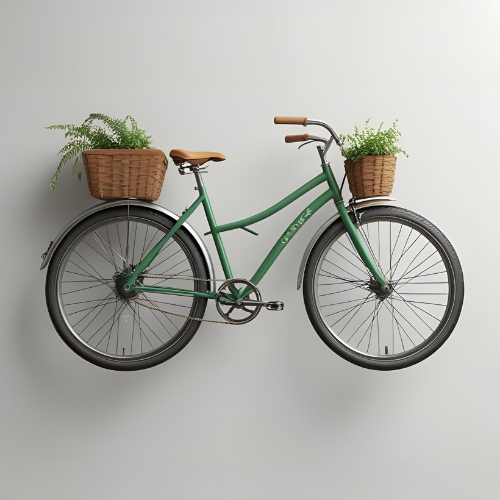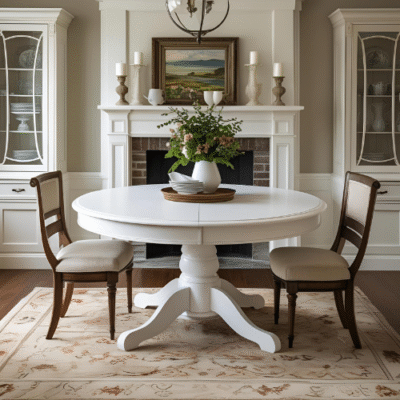Imagine soaring through the sky on a sleek, minimalist flying bike that combines futuristic technology with a design so simple it turns heads. Flying bikes, once confined to the realm of sci-fi movies like Star Wars, are now becoming a reality, and their aesthetic appeal is as captivating as their functionality. In 2025, these beautiful machines are redefining personal transportation with their clean lines, lightweight materials, and effortless style. This article dives into the world of flying bikes with simple yet stunning designs, exploring their technology, why their aesthetics matter, and how they’re shaping the future of mobility.
The Rise of Flying Bikes
Flying bikes, also known as hoverbikes or airbikes, are no longer just a fantasy. Recent advancements in aerospace engineering, electric propulsion, and lightweight materials have brought these vehicles to life. Companies like Volonaut, a Polish startup, have unveiled working models like the Volonaut Airbike, which takes off, flies, and lands with the grace of a speeder bike from a sci-fi blockbuster. These bikes are designed for single riders, offering a thrilling yet practical alternative to traditional transportation.
What makes these flying bikes stand out is their ability to blend cutting-edge technology with minimalist design. Unlike bulky aircraft or complex drones, these bikes prioritize simplicity, making them not only functional but also visually striking. Let’s explore why their simple style is so appealing and how it enhances their beauty.
Why Simple Style Matters in Flying Bikes
Minimalism Meets Futurism
The beauty of flying bikes lies in their clean, uncluttered designs. By stripping away unnecessary elements, manufacturers create vehicles that look sleek and futuristic. For example, the Volonaut Airbike uses carbon fiber and 3D-printed components to achieve a lightweight, streamlined look that feels both modern and timeless. This minimalist approach ensures the bike is aerodynamic, which is crucial for flight, while also making it a head-turner on the ground.
Functional Elegance
Simple design isn’t just about aesthetics—it’s about performance. A flying bike with fewer components is easier to maintain, more efficient in flight, and often more affordable to produce. The clean lines and smooth surfaces reduce air resistance, allowing the bike to “fly” with ease. This blend of form and function creates a sense of effortless elegance, much like a well-tailored outfit that looks good without trying too hard.
Universal Appeal
A simple, stylish flying bike appeals to a wide audience. Whether you’re a tech enthusiast, a design lover, or an adventure seeker, the understated beauty of these bikes resonates. Their neutral color palettes—often metallic silvers, matte blacks, or glossy whites—make them versatile, fitting into urban environments or wide-open landscapes with equal grace.
Top Features of Beautiful Flying Bikes
Flying bikes with simple style share several key features that enhance their aesthetic and functional appeal. Here’s what makes them stand out:
1. Lightweight Materials
Modern flying bikes use materials like carbon fiber, titanium, and advanced composites to keep weight low without sacrificing strength. The Volonaut Airbike, for instance, leverages carbon fiber for a featherlight frame that looks sleek and futuristic. These materials give the bikes a polished, high-tech appearance while ensuring they can lift off and maneuver effortlessly.
2. Aerodynamic Shapes
The best flying bikes have smooth, flowing lines that minimize drag. Think of curved handlebars, tapered frames, and integrated propulsion systems that blend seamlessly into the design. This aerodynamic focus not only improves performance but also creates a visually appealing silhouette that screams speed and sophistication.
3. Minimalist Controls
Unlike traditional motorcycles with complex dashboards, flying bikes often feature intuitive, streamlined controls. Touchscreens or simple joysticks replace bulky gauges, keeping the cockpit clean and modern. This simplicity enhances the rider’s experience, making the bike feel like an extension of their body.
4. Electric or Jet Propulsion
Many flying bikes, like the Volonaut Airbike, use electric or jet-powered systems for propulsion. These systems are quieter and cleaner than traditional engines, contributing to the bike’s sleek aesthetic. The absence of bulky exhausts or fuel tanks allows for a smoother, more refined look.
My Favorite Flying Bike Designs
Several flying bikes have captured attention for their simple yet stunning designs. Here are a few that stand out in 2025:
Volonaut Airbike
The Volonaut Airbike is a game-changer, with raw flight footage showcasing its ability to take off, cruise, and land like a real-world speeder bike. Its carbon fiber frame and 3D-printed components create a lightweight, minimalist look that’s both futuristic and approachable. The matte black finish and subtle curves give it a stealthy, elegant vibe that’s perfect for urban adventurers.
Xturismo Hoverbike
Developed by Japanese startup ALI Technologies, the Xturismo Hoverbike combines a motorcycle-like frame with drone-inspired propulsion. Its sleek, aerodynamic design features a glossy finish and compact thrusters, making it look like it rolled straight out of a sci-fi movie. The simple color scheme often black or silver enhances its modern appeal.
Vintage Electric Bikes Tracker Classic
While not a true flying bike, the Tracker Classic deserves mention for its motorcycle-inspired e-bike design that hints at the flying bike aesthetic. With a retro look, round headlight, and clean lines, it captures the essence of simple style. Its powerful 750W motor and hydraulic disc brakes make it a stylish yet practical option for those dreaming of flight.
Styling Tips for Flying Bike Enthusiasts
If you’re dreaming of owning or simply admiring a flying bike, here are some tips to embrace their aesthetic in your lifestyle:
1. Embrace Minimalist Gear
Complement the bike’s simple style with sleek, functional riding gear. Opt for a fitted leather jacket in black or grey, paired with a minimalist helmet featuring a clear visor. Avoid overly colorful or cluttered designs to maintain the bike’s clean aesthetic.
2. Customize with Subtle Accents
Some flying bikes allow for customization, like adding a custom paint job or decals. Stick to subtle accents, such as metallic stripes or matte finishes, to enhance the bike’s look without overpowering its simplicity. For example, a silver stripe on a black Volonaut Airbike can add a touch of flair.
3. Choose the Right Environment
Flying bikes look best in open, modern settings. Imagine cruising above a city skyline or gliding over a desert landscape. When showcasing your bike, choose environments that highlight its sleek design, like urban rooftops or minimalist hangars.
4. Pair with Tech Accessories
Enhance the futuristic vibe with tech-inspired accessories, like smart sunglasses or a touchscreen smartwatch. These add functionality while keeping the look clean and modern, aligning with the bike’s high-tech aesthetic.
The Technology Behind Flying Bikes
The beauty of flying bikes isn’t just skin-deep—it’s rooted in cutting-edge technology. Here’s a closer look at what powers these stunning machines:
Electric and Jet Propulsion
Most flying bikes use electric motors or jet turbines for lift and propulsion. The Volonaut Airbike, for example, relies on jet-powered thrusters, giving it the power to hover and maneuver with precision. Electric systems are quieter and more sustainable, while jet systems offer raw power for a thrilling ride.
Lightweight Frames
Carbon fiber and 3D-printed composites are game-changers for flying bikes. These materials reduce weight, making it easier for the bike to achieve lift. They also allow for smoother, more aerodynamic shapes that enhance both performance and style.
Advanced Control Systems
Flying bikes require sophisticated control systems to ensure stability and safety. Many use fly-by-wire technology, where electronic controls replace mechanical ones, resulting in a cleaner cockpit and more responsive handling. This technology also contributes to the minimalist design by reducing visible components.
Battery and Range
For electric flying bikes, battery life is critical. High-capacity batteries, like those in the Tracker Classic, offer ranges of 40–75 miles, depending on conditions. Future advancements may extend this range, making flying bikes more practical for longer journeys.
Challenges and Considerations
While flying bikes are breathtaking, they come with challenges:
Regulatory Hurdles
Flying bikes often fall into a grey area between bicycles, motorcycles, and aircraft. In many regions, they require special licenses or can only be used off-road. Always check local regulations before riding.
Cost
Flying bikes are expensive, with models like the Vintage Electric Tracker Classic costing upwards of $5,495. However, as technology advances, prices may become more accessible.
Safety
Flying at low altitudes requires skill and caution. Manufacturers are incorporating safety features like hydraulic disc brakes and stability controls, but riders must undergo training to operate these bikes safely.
The Future of Flying Bikes
The future of flying bikes is bright, with innovations on the horizon:
-
Improved Battery Life: Advances in battery technology will extend range, making flying bikes viable for longer trips.
-
Affordable Models: As production scales, prices may drop, bringing flying bikes to a wider audience.
-
Urban Integration: Cities may develop “air lanes” for flying bikes, integrating them into urban transportation systems.
-
Sustainable Designs: Eco-friendly materials and electric propulsion will make flying bikes a greener alternative to cars.
Why These Bikes Are Worth Watching
Flying bikes with simple style are more than just a mode of transport—they’re a glimpse into the future. Their sleek designs, inspired by sci-fi and refined by modern engineering, capture the imagination. Whether it’s the Volonaut Airbike’s raw power or the Xturismo’s elegant lines, these bikes prove that simplicity can be stunning. They’re not just about getting from A to B—they’re about making a statement, embracing innovation, and redefining what’s possible.
Conclusion
Beautiful flying bikes with simple style are stealing the spotlight in 2025, blending minimalist design with cutting-edge technology. From the Volonaut Airbike’s carbon fiber frame to the Xturismo Hoverbike’s sleek silhouette, these machines are as gorgeous as they are groundbreaking. By embracing their aesthetic in your gear, environment, and accessories, you can fully immerse yourself in their futuristic charm. As technology evolves, flying bikes will become more accessible, sustainable, and integrated into our lives, making them a trend worth watching. So, keep your eyes on the skies—these beautiful flying bikes are here to stay.











No Comment! Be the first one.